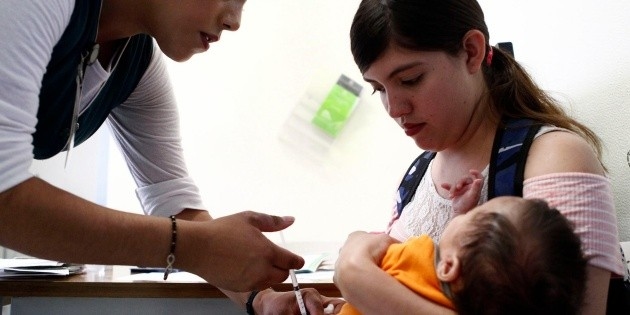The long shadow of trauma: Are its effects transmitted from parents to children?
Let's imagine an extreme case of traumatic experience: a Gazan teenager sees her parents and siblings die during a bombing, which she miraculously survives. Let's imagine that this girl suffers, as a result of that terrible episode, a prolonged psycho-emotional hell. She spends her days immersed in anguish, under constant tension, haunted by terrifying memories, fearing the imminence of another catastrophe. Years pass, and she gives birth to a baby who, shortly after birth, is given up for adoption to a quintessentially good family in some distant country.
The child grows up loved, without knowing his origins, without seeing his biological mother suffer in silence or hearing her story, without being imbued with a collective memory of ineffable horror. Is it likely that, even so, this person will experience a diffuse anxiety, a fear without any real threat in sight? Will he be more prone to developing depression? Or will he experience peaks of paralyzing anxiety in the face of life's twists and turns?
This assumption illustrates a question that science has long sought to answer: Are the consequences of trauma inherited in their purely physiological form, without any learning involved? If so, the key lies in epigenetics —that is, how DNA (in principle immutable) is expressed based on environmental factors and how these changes (in principle reversible) are acquired or not from our parents. It is expected that trauma produces epigenetic transformations in the victim's body. The question is whether these modifications are also passed on to children—or even grandchildren—along with the strictly genetic burden, which remains monolithic and independent of what one goes through in life.
Isabelle Mansuy , director of a laboratory at the University of Zurich focused on this question, clarifies via videoconference that, strictly speaking, "it's not the trauma that is transmitted, but its effects." So, in her opinion, speaking of intergenerational trauma is misleading, even though it is the term commonly used in the literature on the subject. It is also increasingly used among mental health professionals or in self-help free will. Like so many things in psychology, it is a very suggestive area for speculating about the causes of suffering and the remedies to alleviate it.
Psychologist Ana García Gómez, who offers training on this topic, notes a certain trivialization in the use of the term and, above all, in its implications: "Justifying, for example, that someone is the way they are because their grandfather fought in the Civil War." García Gómez perceives a flippancy in addressing a very delicate phenomenon that still suffers from significant empirical gaps. And she is concerned about the popularity, even among clinical psychologists, of certain healing approaches with a "cosmic" foundation—especially family constellations—which, she points out, "are not based on scientific evidence but on mere suggestion."
For now, there is little solid evidence that traumatized parents burden their offspring with a heavy burden, regardless of their upbringing. Mansuy maintains that, in humans, “we know virtually nothing about the epigenetic transmission of the consequences of trauma.” This, she adds, “doesn't mean it doesn't exist, but that it's very difficult to prove.” She and her collaborators focus their research on mice, where interference-free observation conditions are feasible: “They all live in cages, see the same things, eat the same things. Their lives are very similar.” Even so, Mansuy explains that it remains difficult to know where to look—among the multitude of organs and cells—to detect epigenetic changes caused by trauma and possible associations between parents and their offspring. There is, for now, evidence of post-traumatic transformation in the sperm cells of male mice.
It's easier to analyze the specific symptoms resulting from exposing mice to "high-stress situations" and see if these also occur in their offspring. There, Mansuy continues, the connection seems clear. In both cases, depression, antisocial behavior, and memory problems are observed. Furthermore, the intergenerational manifestations of trauma extend to the strictly physical level: an enlarged heart, a weakened immune system...
Mansuy is critical of the impact of Rachel Yehuda's research , widely cited as irrefutable evidence of the so-called intergenerational trauma. "Her conclusions have been greatly exaggerated," she believes. Yehuda, who did not respond to this newspaper's interview requests, found epigenetic alterations in Holocaust survivors and their descendants. Specifically, the correlation occurs in the FKBP5 gene, related to stress regulation. Mansuy details her caution: "We cannot conclude that these changes were biologically transmitted by the parents, or even that they are related to trauma. But if that were the case, perhaps the descendants suffered another trauma unrelated to that of their parents. Or perhaps the trauma was generated within the family through cultural transmission."
Whether corroborated or not, the hypothesis about the familial legacy of post-traumatic symptoms seems plausible. Neetje van Haren is a professor at the University of Rotterdam and coordinates a European Union-funded project to understand the intricacies of parental inheritance in the development of mental disorders. She and her team dissect and combine "a set of genetic, epigenetic, and environmental factors" to gauge an individual's risk of suffering from schizophrenia or severe depression if their parents have suffered or continue to suffer from one of these illnesses. They have established that the probability increases by 60-70%, although she admits that "the part of this increased risk that corresponds strictly to the biological aspect is still quite unknown."
Without considering trauma per se in her research, Van Haren asserts that such transmission dynamics could very well occur in this area. “It's logical to think that epigenetic processes play a very important role in the broad spectrum of mental health. Stress is stress, and it leaves a biological mark; it doesn't matter whether it comes from experiencing a war or depression.”
Both Mansuy and Van Haren refer to Ali Jawaid's findings in populations in Bosnia and Pakistan , which point to a greater vulnerability to traumatic injury during childhood. Their line of research could indicate that if trauma occurs at a young age, the associated metabolic and epigenetic changes are more likely to affect reproductive cells (sperm and eggs) in the long term and be passed on to children, even many years later.
The good news is that, since they are not codified as a life sentence, the consequences of trauma in victims and their descendants can be reversed. Neuropsychiatrist Jorge Barudy has spent half a century treating families with a history of torture and other torments that occurred during the Chilean and Argentine dictatorships. He has created what he calls systemic trauma therapy . He has no doubt that "a well-treated and cared-for person has a good chance of developing healthily, even if their parents have lived through a particularly painful experience that has generated destructive epigenesis." To this, Barudy contrasts "constructive epigenesis," closely linked to "good treatment within the socio-affective network."
In the aseptic environment of the laboratory, Isabelle Mansuy has found that mice exposed to stress stop showing post-traumatic symptoms when they are placed in an "enriching environment" for a few weeks. This also breaks the chain of transmission. Once the trauma has healed, the mice procreate, and their offspring no longer show any inherited acute psycho-emotional pain.
EL PAÍS





